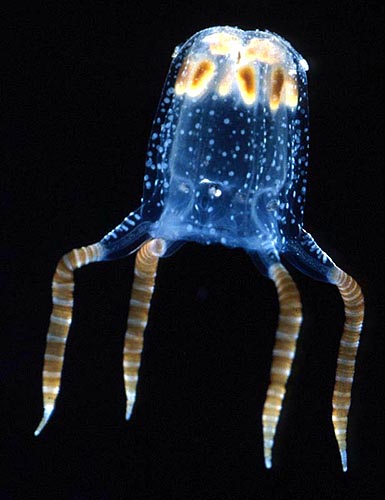|
If you go out onto the reef flats at night in Guam with a flashlight,
you might run into this little guy. If you do see it, be careful. They
appear to be attracted to lights and they can deliver
a painful little sting. According to Gustav Paulay,
this cubozoan spends its days
attached by its bell
to the undersides of rocks. In the lab, they have been observed
to stick themselves to a variety of substrates, including glass,
dead coral, and live algae. To attach themselves,
these box jellies have "sticky pads".
The larger white patches near the top of the bell of the specimen
above might be the sticky pads. Another interesting tidbit of information
about this cubozoan is that it comes out in droves during the
once-a-year coral spawning event on the Great Barrier Reef, Australia.
Carybdea sivickisi has a bell that is about 1 centimeter tall
in a fully grown individual.
|







